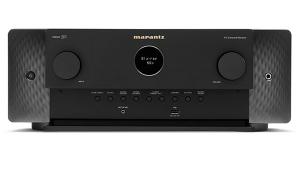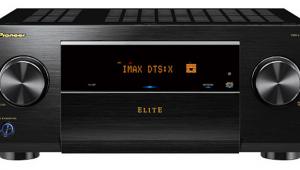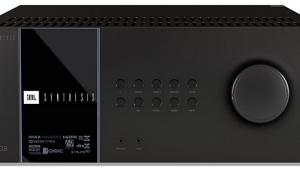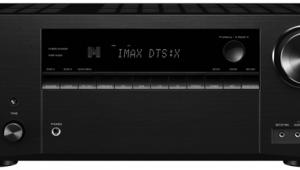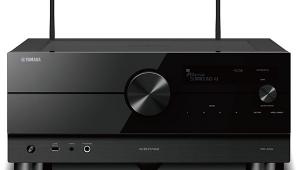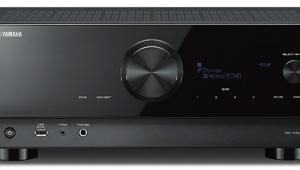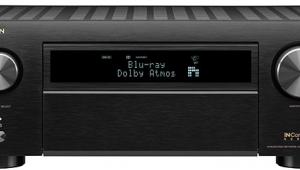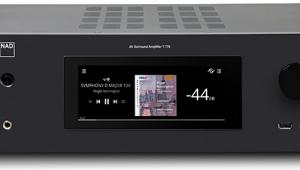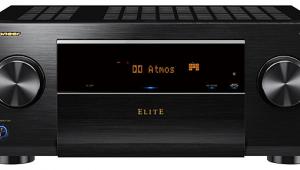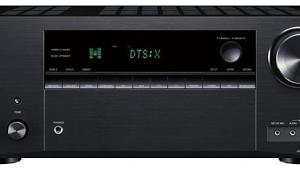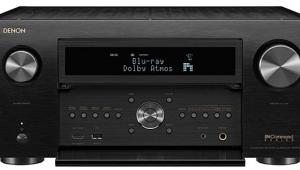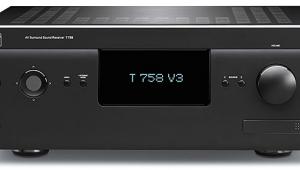Yamaha Aventage RX-A1010 A/V Receiver HT Labs Measures
Two channels driven continuously into 8-ohm loads:
0.1% distortion at 116.9 watts
1% distortion at 133.9 watts
Five channels driven continuously into 8-ohm loads:
0.1% distortion at 53.5 watts
1% distortion at 65.3 watts
Seven channels driven continuously into 8-ohm loads:
0.1% distortion at 52.5 watts
1% distortion at 63.0 watts
Analog frequency response in Pure Direct mode:
–0.06 dB at 10 Hz
–0.02 dB at 20 Hz
+0.05 dB at 20 kHz
–2.69 dB at 50 kHz
Analog frequency response with stereo signal processing:
–0.24 dB at 10 Hz
–0.09 dB at 20 Hz
–0.22 dB at 20 kHz
–63.35 dB at 50 kHz
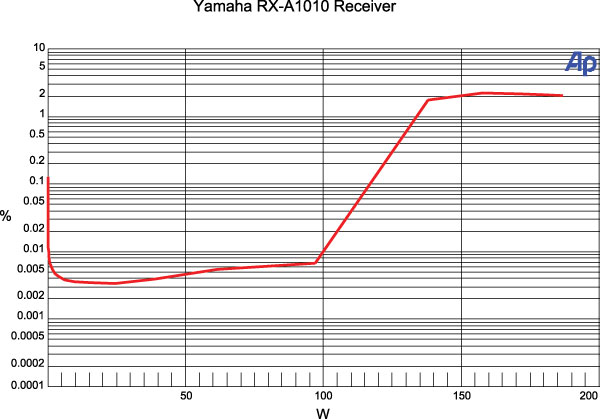
This graph shows that the RX-A1010’s left channel, from CD input to speaker output with two channels driving 8-ohm loads, reaches 0.1 percent distortion at 116.9 watts and 1 percent distortion at 133.9 watts. Driven into 4 ohms, the amplifier reaches 0.1 percent distortion at 150.1 watts and 1 percent distortion at 176.4 watts.
Response from the multichannel input to the speaker output measures –0.08 decibels at 10 hertz, –0.03 dB at 20 Hz, –0.01 dB at 20 kilohertz, and –2.81 dB at 50 kHz. THD+N from the CD input to the speaker output was less than 0.007 percent at 1 kHz when driving 2.83 volts into an 8-ohm load. Crosstalk at 1 kHz driving 2.83 volts into an 8-ohm load was –101.96 dB left to right and –97.36 dB right to left. The signal-to-noise ratio with an 8-ohm load from 10 Hz to 24 kHz with “A” weighting was –108.80 dBrA.
From the Dolby Digital input to the loudspeaker output, the left channel measures –0.03 dB at 20 Hz and –0.07 dB at 20 kHz. The center channel measures –0.03 dB at 20 Hz and –0.06 dB at 20 kHz, and the left surround channel measures –0.03 dB at 20 Hz and –0.06 dB at 20 kHz. From the Dolby Digital input to the line-level output, the LFE channel is +0.14 dB at 20 Hz when referenced to the level at 40 Hz and reaches the upper 3dB down point at 94 Hz and the upper 6dB down point at 118 Hz. —MJP
Video Test Bench
The Yamaha processes SD signals (480i/480p) over HDMI, but any HD signal is only passthrough. Regardless, it passed all of the applicable HDMI tests with flying colors, although its proprietary upconversion of SD signals doesn’t measure up to the solutions from HQV or Marvell. Its analog deinterlacing performance (not shown) passed the Spears & Munsil 3:2 HD test, but didn’t pass the challenging real-world test from the Vatican scene in Mission: Impossible III. It also fails the 2:2 HD test (very common), but it rolls off a lot of chroma information, and I would be hesitant to run analog video signals through the AVR. That said, I found no fault with it clipping digital video signals passing through its HDMI inputs and outputs, which is how most high-definition sources are likely to be connected. —DV

